DAVID Blackmore is a man obsessed. The farmer and wagyu geneticist lives and breathes cattle, going to incredible lengths to ensure his animals are treated well and fed his secret ration.
Competitors acknowledge he is the emperor of Australian wagyu; his meat is served at Thomas Keller's Per Se and French Laundry, Nobu and Momofuku in the US, as well as featuring on the menu in Neil Perry's restaurants, Shannon Bennett's Vue de Monde, and across Paul Wilson's Melbourne Pub Group.
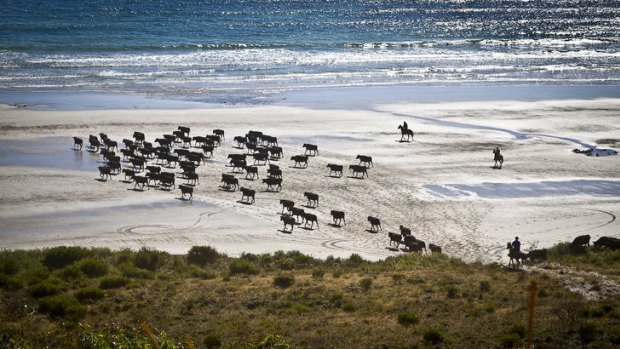
Hammond brothers cattle on Robbins Island.Credit: Jules Ober
Now, he is taking the next big step in an ambitious 24-year career of rearing wagyu. Never one to stop innovating - and at considerable expense - Blackmore is moving almost his entire herd out of the finishing feedlot and back onto the shaded pastures of his Alexandra farm come spring, where they will still be fed his grain ration, but will have the space to roam. ''We love our animals more than most people do,'' he says. ''Our farm management and animal husbandry are second to none. Our quality comes from genetics and the flavour comes from this particular ration.''
It is an exciting time for Australian wagyu as producers enter their third decade of production and find new ways of rearing the cattle. Nick and Vicki Sher in Ballan started breeding their animals in 1992, and in Tasmania, the Hammond brothers of Robbins Island are supplying the Australian market for the first time after 20 years of exports.
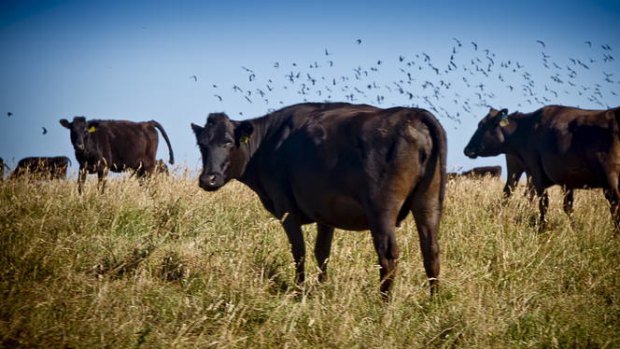
Grass-fattened wagyu bound for the local market.Credit: Jules Ober
Originally a Japanese breed, wagyu is valued for its flavour and texture and its marbling, or intramuscular fat, score. While most beef carcasses score up to three, a wagyu can score nine.
The pioneer of wagyu in Australia, Blackmore is one of a handful of producers who deals with full-blood (100 per cent) wagyu. He imported embryos and bulls in 1988 and a new full-blood line in 1993. His meat is special because he rears it the old-fashioned Japanese way: the animals are fed grain for more than 600 days to ensure their weight gain is steady. Neil Perry is one of his biggest fans. ''With David Blackmore's wagyu, you end up with these amazing caramel and popcorn flavours, and incredible melt-in-the-mouth texture,'' Perry says.
In Ballan, the Shers, who had their first wagyu calf in 1992, finish their cattle for 400 days on a slow-growth ration. They produce F1 (wagyu-Holstein cross) and some full-bloods. Initially, it was all about export, but six years ago, they started selling meat at home, which now accounts for 20 per cent of sales.
The Australian market will continue to grow, Nick Sher predicts. ''My hope is that people will differentiate between brands as there's some average product out there.''
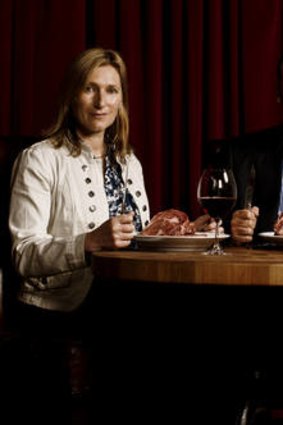
Nick and Vicki Sher.
Australian wagyu has a good reputation overseas, he says. The perception in the US is Australia's best is superior to the local equivalent.
It is also 20 years since John Hammond and his brothers started raising full-blood wagyu on Robbins Island. When the cattle need to be moved, the brothers take to horseback to drive the herd onto the mainland at low tide.
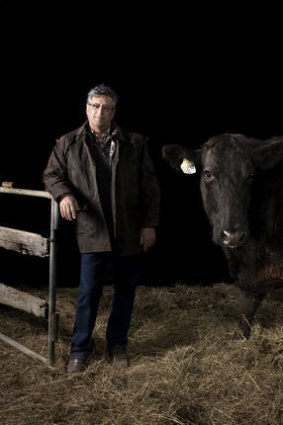
David Blackmore.Credit: James Greer
Hammond exports his traditional grain-fed wagyu to Japan and, last year, decided to offer grass-fattened wagyu to the local market. Though not traditional, Hammond believes the stronger flavour that comes with grass feeding suits our tastes better and the marbling score is still a hefty six.
Victorian winemaker and farmer Neil Prentice has taken a similar approach. He started rearing wagyu cattle at Moondarra in 1999. His grain-fed, full-blood Tajima wagyu were well-received but he felt that while the meat was tender it had no great flavour. Like his grapes, he wanted his meat to taste of where it came from, so he switched his wagyu to grass. He says it took a while to get consistent results but now his wagyu has real ''gout du terroir'' - a taste of the earth or region. With a marble score of seven or eight, he says Australians love the taste but most Japanese would find it too strong.
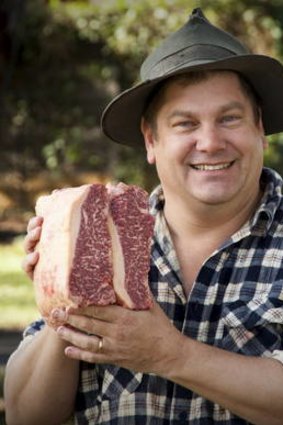
Neil Prentice.
Other notable wagyu producers include Scott de Bruin at Mayura Station in South Australia (mostly export), Rob and Nita Lennon's Gundooee Organic Wagyu, and Japanese-owned Rangers Valley, both in New South Wales.
At The Point restaurant in Albert Park, wagyu is divided into full-blood and F1 on the menu. Chef Justin Wise wants to educate diners about the difference between the two and is keen to see regulations for labelling wagyu. ''In Australia, if a product has any percentage of wagyu in it, it can be labelled as wagyu, which is very deceiving for customers,'' he says.
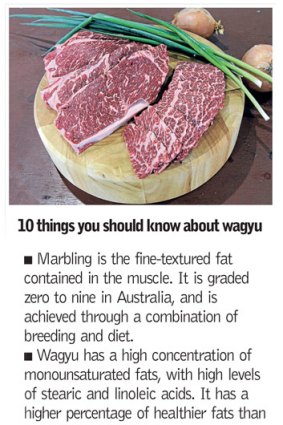
Blackmore agrees: ''There should be truth in labelling and people should know what they are buying. With the wagyu label, they don't know what they are buying.''
At The Point, a 250-gram Sher F1 steak costs $69 and a 220-gram Blackmore full-blood steak is $115. It's expensive because Wise has to pay top dollar for the meat and there's about 40 per cent wastage.
Paul Wilson, chef-director of the Melbourne Pub Group, also believes many operators and chefs are giving wagyu a bad name.
''The overuse of the term 'wagyu' confuses the market and allows cheaper brands of wagyu to dominate,'' he says. ''Full-blood wagyu is all about luxury and a true gastronomic experience; it's the pinnacle of eating beef.''
Where to buy
David Blackmore wagyu is sold at Peter Bouchier, Hawksburn. Moondarra wagyu is available from T.O.M.S, South Melbourne Market; Neil's Meats, Prahran Market. Sher wagyu is at Box Hill Central Meats; Rainbow Meats, Chadstone; East Hawthorn Gourmet Meats; Len's Quality Meats, Malvern; Salvatore Regional Butcher, Ballan; John Harbour Quality Butcher, Ballarat. For Robbins Island wagyu, contact john@hammondfarms.com.au.